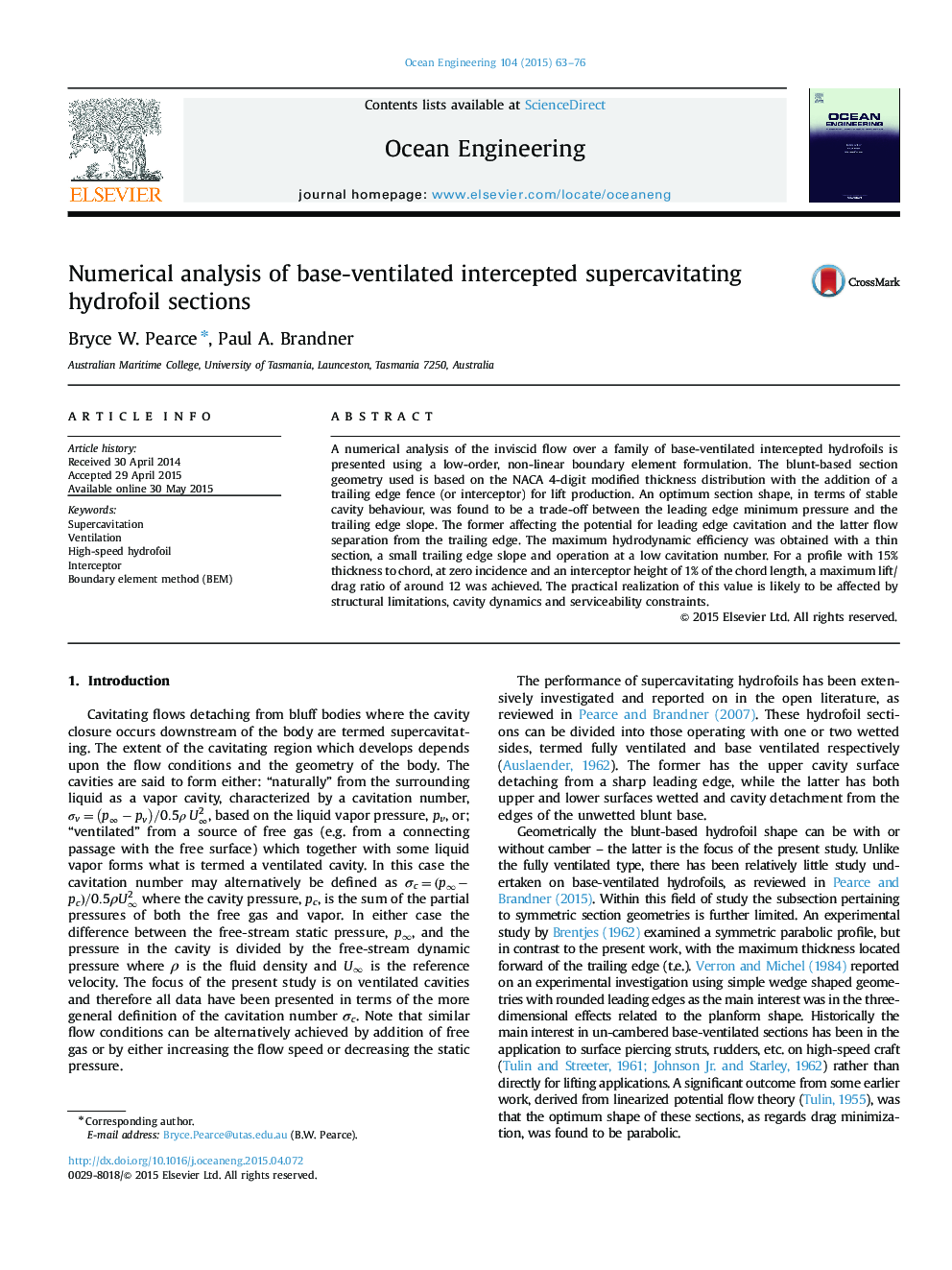| کد مقاله | کد نشریه | سال انتشار | مقاله انگلیسی | نسخه تمام متن |
|---|---|---|---|---|
| 1725341 | 1520686 | 2015 | 14 صفحه PDF | دانلود رایگان |
• We model the 2-D flow about a novel base-ventilated supercavitating hydrofoil.
• The global behaviour of the novel hydrofoil performance is described.
• A thin section profile with a small trailing edge slope is the optimum shape.
• Operation at a low cavitation number is the optimum flow condition.
• Ultimately, performance will be limited by practical constraints.
A numerical analysis of the inviscid flow over a family of base-ventilated intercepted hydrofoils is presented using a low-order, non-linear boundary element formulation. The blunt-based section geometry used is based on the NACA 4-digit modified thickness distribution with the addition of a trailing edge fence (or interceptor) for lift production. An optimum section shape, in terms of stable cavity behaviour, was found to be a trade-off between the leading edge minimum pressure and the trailing edge slope. The former affecting the potential for leading edge cavitation and the latter flow separation from the trailing edge. The maximum hydrodynamic efficiency was obtained with a thin section, a small trailing edge slope and operation at a low cavitation number. For a profile with 15% thickness to chord, at zero incidence and an interceptor height of 1% of the chord length, a maximum lift/drag ratio of around 12 was achieved. The practical realization of this value is likely to be affected by structural limitations, cavity dynamics and serviceability constraints.
Journal: Ocean Engineering - Volume 104, 1 August 2015, Pages 63–76
